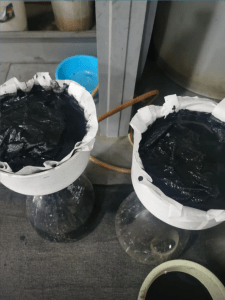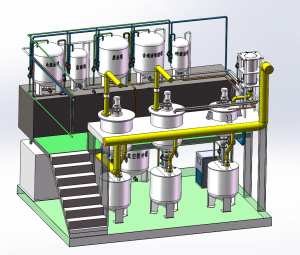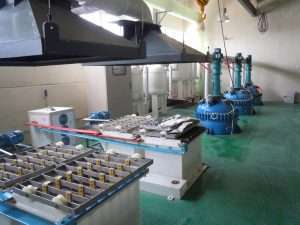Call us now:
1. Preliminarily wash the platinum powder with hydrochloric acid to remove some base metals. After heating at 40-50°C for 10 minutes; pour in hydrochloric acid and use new hydrochloric acid again to ensure the test value.
2. On a heating element, heat the acid solution to 80°C; start adding nitric acid gradually, and the platinum powder will dissolve quickly; in the reflux condenser boiling, boil for 12 hours to achieve complete dissolution.
3. When complete, filter the solution into a wide beaker to begin the denitrification process, which is accomplished by slowly evaporating the solution.
4. Dissolve ammonium chloride with a little water, stir until completely dissolved, pour the ammonium chloride solution into the platinum chloride solution, bright yellow crystals precipitate, and filter the yellow platinum salt. (the solution still has color, which means some is left in the solution)
5. Filtration: wet the filter paper with dilute ammonium chloride solution, and filter Oita powder;
6. Clean the residue in the cup: In the filter paper, wash the yellow powder with ice ammonium chloride solution, and the filtrate is crystal clear; wash the remaining yellow powder with plain water to dissolve it.
7. Mix the filtrate with it, and put the yellow platinum powder aside to dry for a few days.
8. Calcination is just a slow heating process. Decomposition of platinum salt: ammonium chloride, chlorine gas, and platinum sponge are melted at 800°C and cooled, and the platinum sponge is transferred to a high-temperature melting dish for melting again to obtain platinum.


